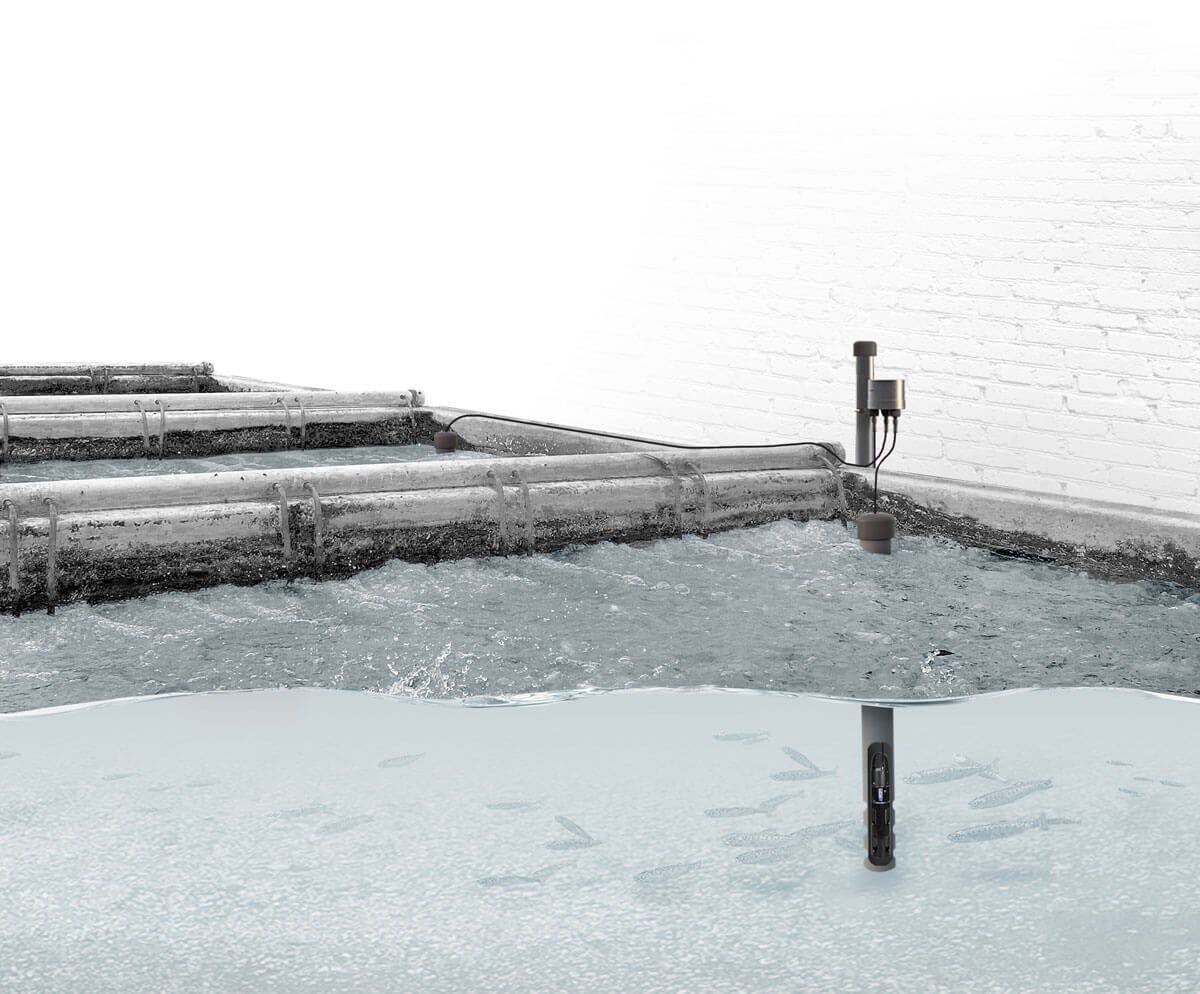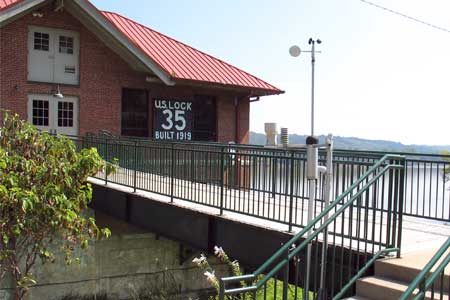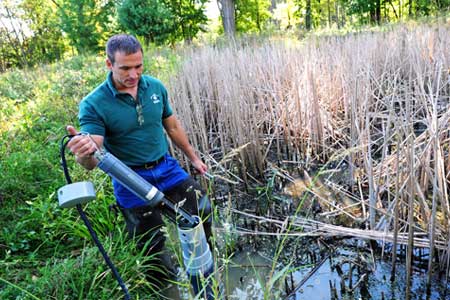Recirculating Aquaculture Monitoring

Recirculating aquaculture systems (RAS) are a unique and emerging development in the field of aquaculture where fish and other species are raised on land in tanks. Water use is minimized through filtering, treatment and reuse. Success with RAS therefore depends on close management and process control, and automated water quality monitoring is a critical component of the operation.
Recirculating Aquaculture Systems

Typical RAS Monitoring System
RAS has several advantages over traditional aquaculture in that it reduces water requirements, eliminates risk of fish escape, and opens up aquaculture to areas without large surface water supplies. With careful management, it may also reduce risk for disease and parasite outbreaks. Careful management depends in large part on data gathered from automated RAS aquaculture monitoring systems.
A typical system consists of a network of X3 environmental data loggers mounted on fish tanks and at treatment processes. The loggers are equipped with wireless transmitters for sending real-time data, or alternatively through cabled connections. Power is supplied through an AC power source with optional battery backup.
The X3 supports most industry-standard water quality sensor types. Sensors are commonly delivered together in multi-parameter sonde instruments such as those from YSI, Hydrolab, Eureka, and In-situ. The YSI EXO3s is one such instrument that can deliver most of the important water quality parameters in a relatively cost-effective package with central wiper for good long-term performance and minimal maintenance.
Since the X3 has multiple sensor ports, sensors can be placed in multiple tanks with cables back to a central logging unit. Furthermore, splitters are available to bus several instruments together on the same line, thus increasing the number of tanks that can be monitored per logger.
In any configuration, data is delivered in near real-time to the WQData LIVE web datacenter. WQData LIVE allows for remote logger control and includes many options for viewing, manipulating, reporting and exporting data. It additionally offers configurable alert and alarm notifications to immediately inform personnel of out of range measurements so that corrective action can swiftly be taken.
Contact a NexSens Applications Engineer today to discuss your recirculating aquaculture monitoring application.

Case Studies
Ohio River Biology Field Station
With its position along the Ohio River, the Thomas More College Biology Field Station is in a prime spot to advance education and research on the waterway. Studies there include fathead minnows and Asiatic clams, as well as the river’s toxicity. A YSI Multi-Parameter Water Quality Sonde monitors a fish tank where fathead minnows are raised.
Read MoreDrinking Water Early Warning System
During the past few years, government agencies have placed an increased emphasis on the protection of drinking water supplies in the United States. Prompted by this initiative, the Ohio River Valley Water Sanitation Commission recently implemented an early warning and water quality monitoring system for the Allegheny and Monongahela rivers in Pennsylvania.
Read MoreWetland and Urban Stream Monitoring
Heavy urban development has caused excess stormwater runoff in the Cleveland area. Resulting flash floods in the city’s metroparks can damage aquatic habitat, erode river banks, and carry sediment into Lake Erie. In response, Cleveland Metroparks staff have deployed a monitoring network to study flow and spread of pollution through park streams and wetlands.
Read More





